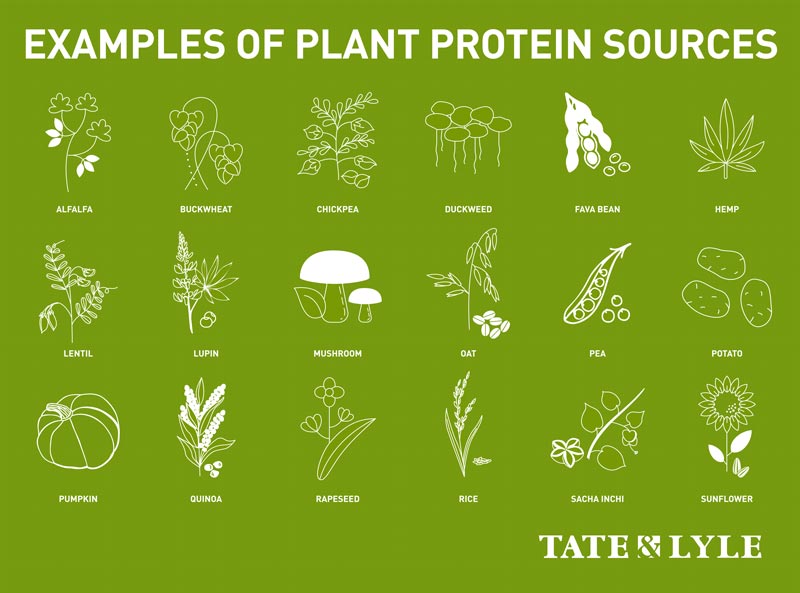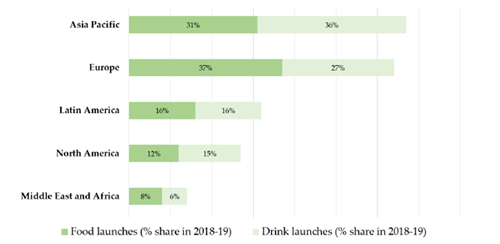As the global population grows, so does the demand for protein. It is widely believed that meeting this demand with animal protein alone is not sustainable and large-scale animal farming raises all kinds of environmental and sustainability concerns. So are plant-based proteins the no-brainer solution to this dilemma?
The concerns voiced around a broad shift towards plant-based diets often focus on the inferiority of plant proteins to animal proteins in terms of their nutritional benefit. But what does the science actually say about this and is the market showing signs of a shift?
The science
Substantial research is available comparing plant proteins with animal proteins, particularly in terms of their effect on glycaemic response, appetite and body weight, and in turn metabolism and cardiovascular and muscle health.
Plant proteins generally have a positive effect on regulating blood sugar and insulin levels when compared with a control (i.e. another type of protein or no protein at all). A variety of plant proteins have been shown to have a beneficial effect on blood cholesterol levels and hypertension.
Protein extracted from peas, rice and hemp has been shown to have a positive impact on overall muscle health, and specifically on improving muscle mass, strength and power in young people.
The common conclusion from the existing body of research is that the health benefits of plant proteins are in fact comparable to those of animal proteins. It should be kept in mind that the science in this field is still emerging, so more needs to be done before explicit dietary recommendations can be formulated.
However, the findings are promising and would suggest that plant proteins could in fact be considered a viable alternative to animal protein, not only from a sustainability perspective, but also from a nutritional one.
To find out about more plant protein’s effect on appetite, body weight, metabolism and cardiovascular and muscle health, take a look at the full scientific review.
The market
As sustainability concerns around global meat consumption increase, so too does demand for plant-based alternatives. This in turn is spurring on increased innovation in the field and the development of new plant protein ingredients.
Global launches of food and drink with added plant protein ingredients are growing rapidly, especially in the west. In Europe, 37% of new food launches and 27% of new drink launches in 2018-19 contained added plant proteins. Research into “new” plant proteins (such as pea, sunflower and pumpkin protein) is also gathering pace.
Global food and drink launches that contain added plant protein ingredients:
The type of products seeing the fastest growth of launches with plant proteins is drinks such as meal replacement drinks and dairy alternatives.
What role do plant-based ingredients play in products?
Plant-based ingredients may be added to products simply to increase the protein content and enhance the nutritional profile of the product, and also to enable them to have certain nutrition claims on the label. This is particularly the case in dairy‐alternative products, such as yoghurts and dairy‐free drinks.
Plant-based ingredients can also be used to deliver functional properties such as texture, for example in vegan drinks. In addition, cost‐effective plant protein ingredients like wheat gluten are used as a base in breakfast cereals and meat analogue products.
Which protein sources are driving innovation?
Soya is currently the leading plant protein ingredient globally. However, it is thought that soya is not as sustainable as other plant proteins and so the search for new ingredients is gathering pace.
The protein sources seeing the biggest growth within product development are pea, sunflower, pumpkin, rice, potato, quinoa and sacha inchi seeds. The fastest growing format is isolates (as opposed to concentrates or flours), perhaps because the process of obtaining them removes any “off flavours”, meaning they offer better sensory, taste and nutrition profiles than flours or concentrates.
Other strands of research and innovation lie in improving the digestibility of plant protein, fortifying plant proteins with individual amino acids and blending different plant proteins together to achieve an optimum nutritional profile.
The future is bright for plant proteins
With an expanding body of research showing that plant proteins have comparable health benefits to animal proteins, and with innovation in plant-based ingredients accelerating, plant proteins could yet prove to be the silver bullet that enables the world to meet its growing nutrition needs over the long term. And not only meeting them in terms of quantity, but also in terms of nutritional quality and in an ethical and sustainable way.
The market is already responding to this potential and consumers are becoming increasingly open to plant alternatives and products containing plant-based ingredients.
So, how does the future look for plant protein? Right now, it’s brighter than ever!
Are you a food or drink manufacturer interested in using plant-based ingredients in your products?
Contact us to find out how we could help you.
About the author
Dr Kavita Karnik is Global Head of Nutrition and Regulatory Affairs at Tate & Lyle. She leads a strategic nutrition science research and education programme, and is involved in new product development, providing credible scientific support for new and existing products.
Learn more about Kavita and her team at the Nutrition Centre, here!



